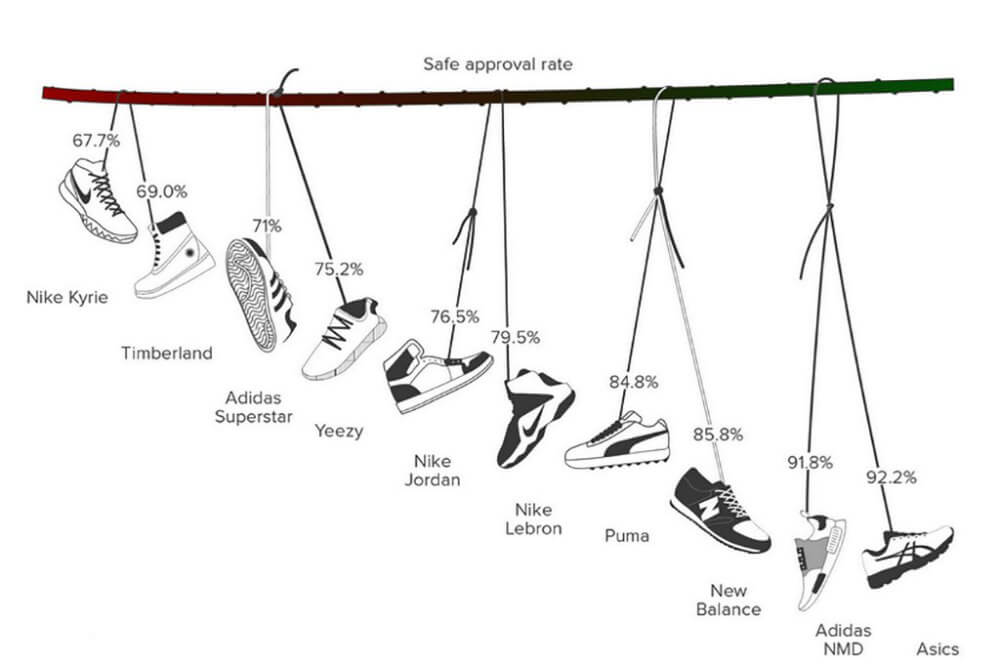![]()
Fraudsters are targeting online sneaker sellers like never before.
Source: Why Selling Sneakers Online Is a Risky Business
Everyday I run into someone making a plan to jump into the resale business. They look at what I do or they look at some rich kid who has money to burn posting pictures on Instagram and they say to themselves, “I can do that.” What they don’t realize is the problems that lie at the heart of online business; especially in sneakers.
This article based on research by Riskified, discusses fraud in particular Chargebacks or Claims. Most sellers have to utilize 3rd party sales platforms to reach customers. Customers don’t really trust the websites of most sneaker sellers. Most sites often lack feedback on buying experiences and the buyer feels that most sneakers are fake, so they rely on third party platforms for protection: Amazon, eBay, Kixify, GOAT, StockX, Wal-Mart, etc.
These third party platforms offer “security” in the form of customer reviews and feedback. They also offer “guarantees” for the buyer. A seller can literally offer a pair of shoes on their personal site for 100 dollars and then place the same shoe onto a third party platform for 200 dollars and the customer will pay the higher price for the sake of “security”.
The source article however is discussing consumer fraud, not store fraud. Which I think is a very good research issue. While incidents of customer fraud are few, when they happen they are painful for small online shops working through third party platforms.
Below is a picture of a page of chargeback claims on my shop. Things you should note in this picture:

- There are 121 total Chargebacks.
- Only the recently closed cases show up on the page. This doesn’t mean that there are only 9 for last year, it means those are the cases that closed.
- When a chargeback happens your cash is removed by the third party seller from any sales made on the platform. That cash is then placed “in the air” and you don’t have access to it until the case is closed. This “in the air” cash creates strain on cashflow for small companies.
- There are over 1000.00 dollars of chargebacks on this one page; multiply that by ten pages and you get 10,000 dollars held in chargebacks.
Claims are a completely different animal and are usually based on a customer stating that a pair of shoes are fake. These accusations typically have no proof at all. The customer is usually attempting to get their money back after wearing the shoes a few times. Most often the reason for a claim is buyer’s remorse. In the sneaker market people will pay a markup and then realize that they really didn’t want the shoe as bad as they thought they did. The shoe is no longer “cool” and they couldn’t afford the shoe, so they file a claim to try and send the shoes back.
What they don’t realize is this actually drives prices up higher and creates a poor buyer/seller arrangement. More important, these fake claims remove a shoe from inventory limiting the opportunity for more offers being available. Which means the fewer purchase opportunities, the higher the price of the shoe. Your money in these instances are held “in the air” as well.
I could do a master class on how to avoid or win these cases because I’ve gone through so many. The point of the article is online sales are risky because there has to be a level of trust involved. The easiest way to avoid issues is to actually review the store you are buying from. For sellers you need to consider the purchase. There are signs that a transaction will be difficult with certain customers. You get an e-mail asking if a shoe is fake after the purchase. You get a request after purchase to ship to a different address. You get a question before the purchase on if you can lower the price. There are signs on both sides. If you plan on getting in business you need to know the problems that await. It’s not all cash and joy.

